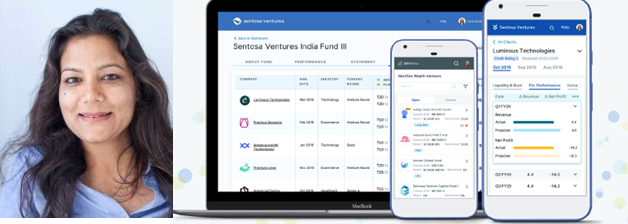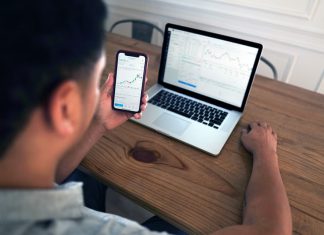With the advent of technology people have become accustomed to improved experiences and better access to data. Digital distribution and reporting technology enables fund managers to transform their operations to be more collaborative with investors and be much more transparent.
Alternative fund managers are in a constant battle to optimise their operations, whether it is raising funds, maintaining relationships or back office workflows. They are also keen to increase the number of funds they are raising; however, many are prevented from doing so due it increasing their operational expenses in a manner that is unsustainable. Digital reporting and distribution can help solve both these problems.
Monika Rao, co-founder and CEO of AIFMetrics, said, “Investor relations is an ongoing effort and not a one-off exercise in gathering investor commitments. With fundraising round requiring months of marketing effort, going digital establishes a more closed investor and intermediary connect. Investors and wealth advisors are going to be inclined to seek out for funds that give them the insights to enable decision making with critical data that can be digested quickly. Digital platforms will also enable distribution of funds to advisors in new geographies as clients look to diversify assets and risk.”
Furthermore, she explained that most investors want transparency and on-demand access to fund level portfolio and performance. They do not want it drip-fed through chunky docs disbursed over email. Reporting is becoming a key metric for decision making for many investors. Through digital reporting they can access real-time portfolio news and analytics to get a current and more relevant perspective of overall fund performance. Fund managers will need to cater to this if they want to keep investors happy.
Relationships with investors can last between seven and 15 years and updating them on performance via email is not enough to build strong relations. Particularly when most managers will only report on a quarterly basis, leaving investors in the dark for as much as six months. Quite frequently, investors learn about developments in the news before they are told by the fund, Rao said. People are also becoming more expectant of improved engagement and transparency, and this old way of working is not good enough. Rao said, “I think those days are gone when you just share a report with the investor and you follow the static approach of just wait and watch.”
Implementing a digital reporting and distribution platform can enable a firm to be more proactive when talking to their investors and intermediaries. They can give them on-demand access to data, real-time portfolio news and analytics, and many other updates through an array of audio-visual content. Younger generations are keen to use technology and the benefits it offers. “Fund Managers need to plan today to start servicing the investors of tomorrow,” Rao said. “I think they will be forced to do it as it’s not a matter of choice anymore.”
Rao explained that a platform like AIFMetrics supplies fund managers with tools to share exactly what they want with investors and when they want to do it. This could be sharing fund performance and portfolio metrics, automated factsheets and marketing collateral with prospective distributors and investors instantaneously. It also enables a fund to create a short video talking about updates, such as their first close, or explaining their ethos to prospective clients. These videos are critical at boosting engagement and putting a face to the brand, whilst physical meetings are impossible due to the pandemic.
These capabilities also stop the firm having to send hundreds of email updates to clients, saving them time. Rao explained that if a fund manager follows digital practices, they can reduce the burden on the operations team and increase efficiency. This allows them to do new successive fundraises without increasing their operational team.
By giving investors access to a digital statement, it enables the relationship to develop further. “Nowadays, investors are looking for co-investment in a lot of the portfolio companies, but how can a fund manager create that connect with that investor and disseminate information with 150 investors via email?” Having an email-based interaction that is quarterly, makes it impossible for co-investment to foster.
Despite still being prominently used, email-based communications are hindering the development of a lot of wealth managers. “With thinly staffed operations teams, it’s becoming difficult for fund managers to address investor interests,” Rao said. Intermediaries are still frequently used to help market funds, but they too lack current information potentially missing out on business for the fund. “Intermediaries often have outdated marketing collateral and as a result, fund managers are losing out on building new clientele. With digital technologies, fund managers can bridge this gap; maintain long term relationships with their investors and intermediaries; providing selective access to updated content on demand.”
Moving away from emails and towards digital distribution can give fund managers better control of their data. Instead of leaving their information in the wild across hundreds of emails, a digital distribution platform lets them decide what is shared and who has access to it. AIFMetrics has defined access rights, which gives them the safety to share sensitive information and prevent it falling into the wrong hands. It also gives click statistics to see if the investor has read it. “A common complaint I’ve heard from a lot of fund managers is their fund update is floating all over the place because it’s sent by email, and they were easy to forward.” Digital reporting increases the frequency of updates but controls it being incorrectly shared.
As mentioned, the technology does increase the frequency investors are given information about performance, which might be concerning to a fund manager. With performance being constantly monitored it can be worrisome, but investors might appreciate the candidness. “I think being proactive and coming from the fund manager makes it more authentic,” Rao said. “If you’ve got bad news, they appreciate you being forthcoming about it and telling them actively versus letting them learn about it in the news.” Explaining when a deal went south or a company is underperforming can show good character of the team. With a desire for transparency increasing, this mentality could boost trust and help keep investors around for later fundraises.
Getting new clients
Digital reporting and distribution not only improves existing relationships, but they can greatly improve a firm’s capacity to engage with prospective clients.
Typically when engaging with a potential client, a fund manager will email a lengthy document outlining fund performance and other key metrics. Investors likely receive multiple of these each day and if the document is too long and complicated, they will probably lose interest. In contrast, the AIFMetrics platform enables a firm to open access to prospective clients. They can view fund performance graphs and access other bite-sized information in a visually engaging medium that is much easier to assimilate, Rao explained.
This method enables an investor to spend five or ten minutes reviewing the key information about a firm and its existing and new funds, without needing to sift through pages of documents. “Digital reporting lets data stand out which is actually worth standing out. In a 20 or 30 page document, the data you actually want to stand out gets lost. Even if it is there, it’s not in going to be remembered by the investor.” Not only can a firm better show off their data; they can also remove access to it if the investor does not show interest; preventing the data floating around in the market.
Digital reporting enables a prospective investor to quickly review data; meaning they can make a decision faster. This could potentially save a fund manager a lot of time during the fundraising process and prevent them wasting time on clients that are not going to commit.
The pandemic has made these types of engagements even more paramount. A fund manager raising their first vehicle probably may not have relations with new investors, especially those that would give them big ticket commitments. Normally they would be able to meet them face-to-face, be it in their offices or at events. However, the pandemic has put a halt on those types of interactions. Instead of having to rely on sending emails and documents, which are impersonal, they can use a digital distribution platform like AIFMetrics to send a short video outlining their ethos and previous experiences. A video is going to be a lot better at showing the investor passion and experience, as well as build an initial connection.
Zoom meetings have become a major part of business due to the pandemic, but they are not enough for fundraising. The whole decision making team is unlikely to be present during the meeting, so having an impactful video can provide the whole team with a clear understanding of the fund and its team. It can also be used to provide updates along the journey and keep those investors in the know.
Implementing a solution
Digitalisation is becoming a necessity. It can be daunting, particularly to an industry that has been slow to technology adoption. However, Rao believes funds should view digital reporting as an investment into future fundraising and not as an expense. “Funds should be able to quickly onboard a digital presence without much change in existing ways of operating, as a starting point.” This means they might begin with distributing digital performance, statements and digital data rooms through visually engaging audio-visual content on new funds and updates. Firms can then move from there and adopt more digital capabilities in a phased manner.
A crucial thing is that firms look for a solution that works with them, rather than tries to change them. Rao stated that AIFMetrics, for example, does not look to replace infrastructure with completely new systems or change how they handle processes. Instead understands their needs, and then onboards them to digital services in a phased manner. Whether that is writing code to integrate digital reporting or add automated tools to workflows. This gradual process also helps them digitise much faster.
Copyright © 2021 FinTech Global











